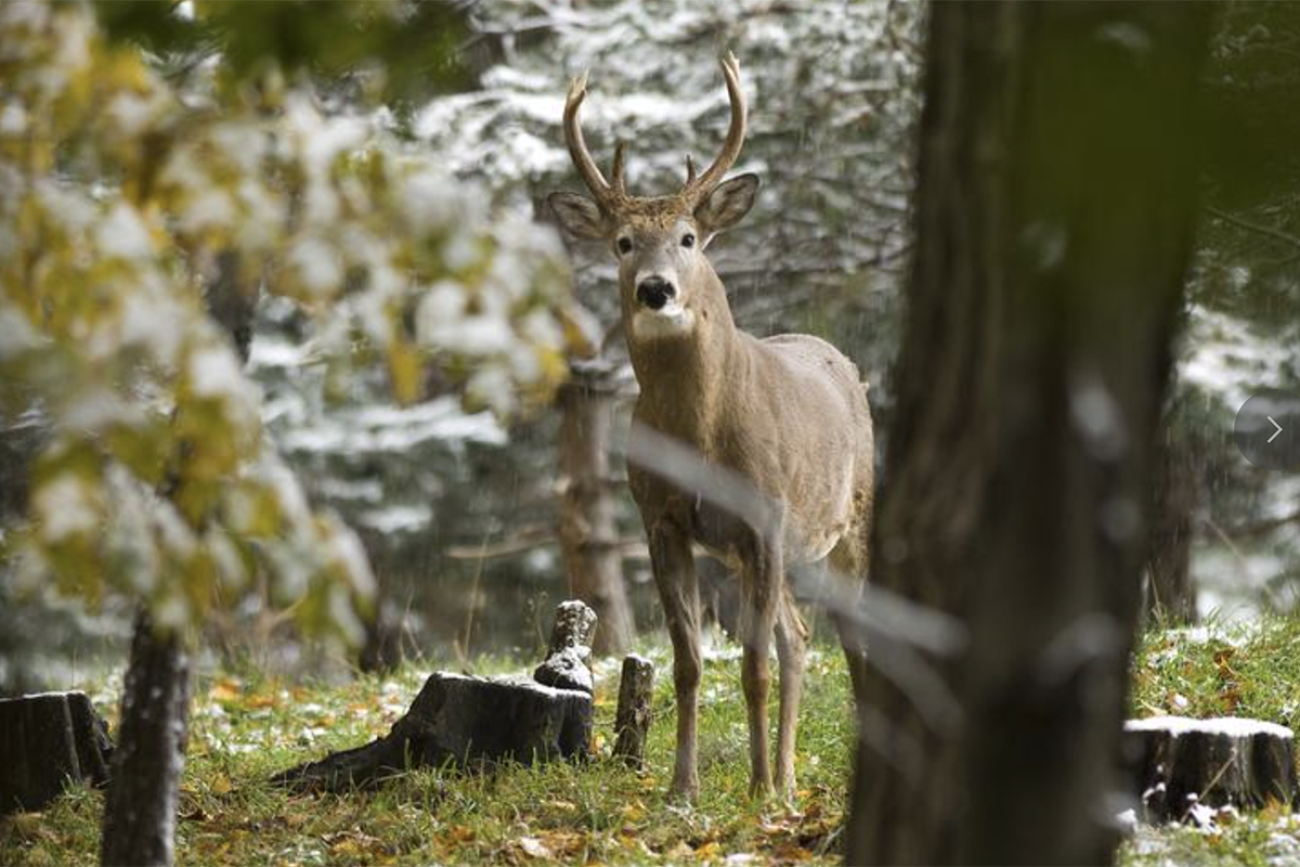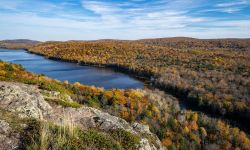Michigan's total deer harvest is down, but hunters shot more bucks in '24

- Total deer kills are down so far this year in Michigan
- Michigan hunters did manage to harvest more bucks than they did this time last year
- The higher buck count came despite an outbreak of epizootic hemorrhagic disease in 2024
Michigan hunters have killed fewer deer so far this year than at the same point in 2023.
As of Friday morning, hunters had killed 266,009 deer, down 3%. That’s a drop of more than 8,200 deer.
Antlerless deer harvests are down 7%, which accounts for most of the overall decline. That’s despite the state recently calling on hunters to kill more female deer.
The number of bucks killed, however, has increased. As of Friday morning, the buck harvest stood at 155,781, compared with 155,649 a year earlier. Michigan hunters killed more than 1.4 of the antlered animals for every antlerless deer taken down.
Disease outbreak
They managed to keep up the buck count despite the state enduring its worst outbreak of epizootic hemorrhagic disease or EHD, since 2012. EHD is a viral deer disease that can be fatal for white-tailed deer.
Related:
- Michigan reports worst outbreak of viral disease in wild deer in 12 years
- As deer ravage suburbs, Michigan urges hunters: Do your part, shoot a doe
- Watch Bridge Lunch Break on deer hunting trends in Michigan
- Archery deer-hunting season in Michigan. What to know: Dates, licenses
- A warning for Michigan drivers: It’s peak season for deer-car collisions
EHD caused die-offs of white-tailed deer this year in Allegan, Barry, Berrien, Branch, Calhoun, Cass, Genesee, Hillsdale, Jackson, Kalamazoo, Kent, Lenawee, Ottawa, St. Joseph and Van Buren counties, according to the Michigan Department of Natural Resources.
“Because deer populations are lower, then there are fewer bucks on the landscape and it becomes harder to be successful,” said Chad Stewart, deer, elk and moose management specialist for the department.
“Most hunters go out wanting a buck and own licenses allowing them to take antlered deer, the primary variable influencing variation is the number of bucks in a population,” Stewart said. “As the population increases, more bucks are available, thus making it easier to harvest a buck. As the population decreases, fewer bucks are available, thus making it more difficult to shoot a buck.
“If we didn't have hemorrhagic disease occurring in the southwestern part of the state, where there are a lot of deer that get shot down there annually … I think our numbers would be much better,” Stewart said.
The buck harvest decreased 39% in Cass County and 48% in St. Joseph County, the two counties hardest hit with EHD. The buck harvest also declined 23% in Van Buren County, 22% in Kalamazoo County, 17% in Barry County and 22% in Kent.
But in Clinton County, where EHD didn’t have a huge impact on the deer population, 3,312 bucks had been harvested as of early Friday, more than the total number of bucks harvested last year, which was 3,236, according to the DNR.
Similarly, in Dickinson County, 1,391 bucks had been harvested as of early Friday, compared to 1,029 a year earlier. In Midland County, 2,106 bucks had been harvested, compared with 1,932 at the same time last year. Hunters in St. Clair County had harvested 3,240 bucks, compared to 3,190 last year.
One of the reasons hunters were successful this year was because the early spring allowed farmers to plant corn early, between May 9 and May 30. Seed corn was harvested in mid-October — in the midst of mating season for deer, which tend to hide out in corn fields.
Usually, deer are hard to get to when they’re feeding in corn fields. But this year, since some farmers harvested corn early, many deer were exposed, making them easier for hunters to access.
The state also anticipates that after late archery season, which runs through Jan. 31, Michigan hunters in Huron, Kent, Lapeer, Macomb, Oakland, Sanilac, St. Clair (except DMU 174), Tuscola, Washtenaw and Wayne counties will harvest roughly 1,000 more deer.
Michigan Environment Watch
Michigan Environment Watch examines how public policy, industry, and other factors interact with the state’s trove of natural resources.
- See full coverage
- Subscribe
- Share tips and questions with Bridge environment reporter Kelly House
Michigan Environment Watch is made possible by generous financial support from:
Our generous Environment Watch underwriters encourage Bridge Michigan readers to also support civic journalism by becoming Bridge members. Please consider joining today.
See what new members are saying about why they donated to Bridge Michigan:
- “In order for this information to be accurate and unbiased it must be underwritten by its readers, not by special interests.” - Larry S.
- “Not many other media sources report on the topics Bridge does.” - Susan B.
- “Your journalism is outstanding and rare these days.” - Mark S.
If you want to ensure the future of nonpartisan, nonprofit Michigan journalism, please become a member today. You, too, will be asked why you donated and maybe we'll feature your quote next time!






